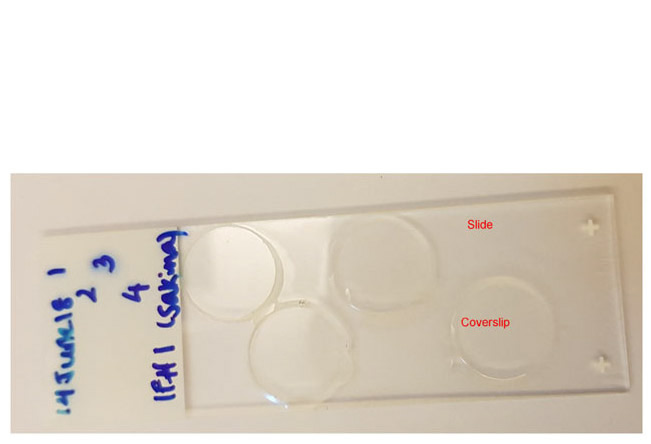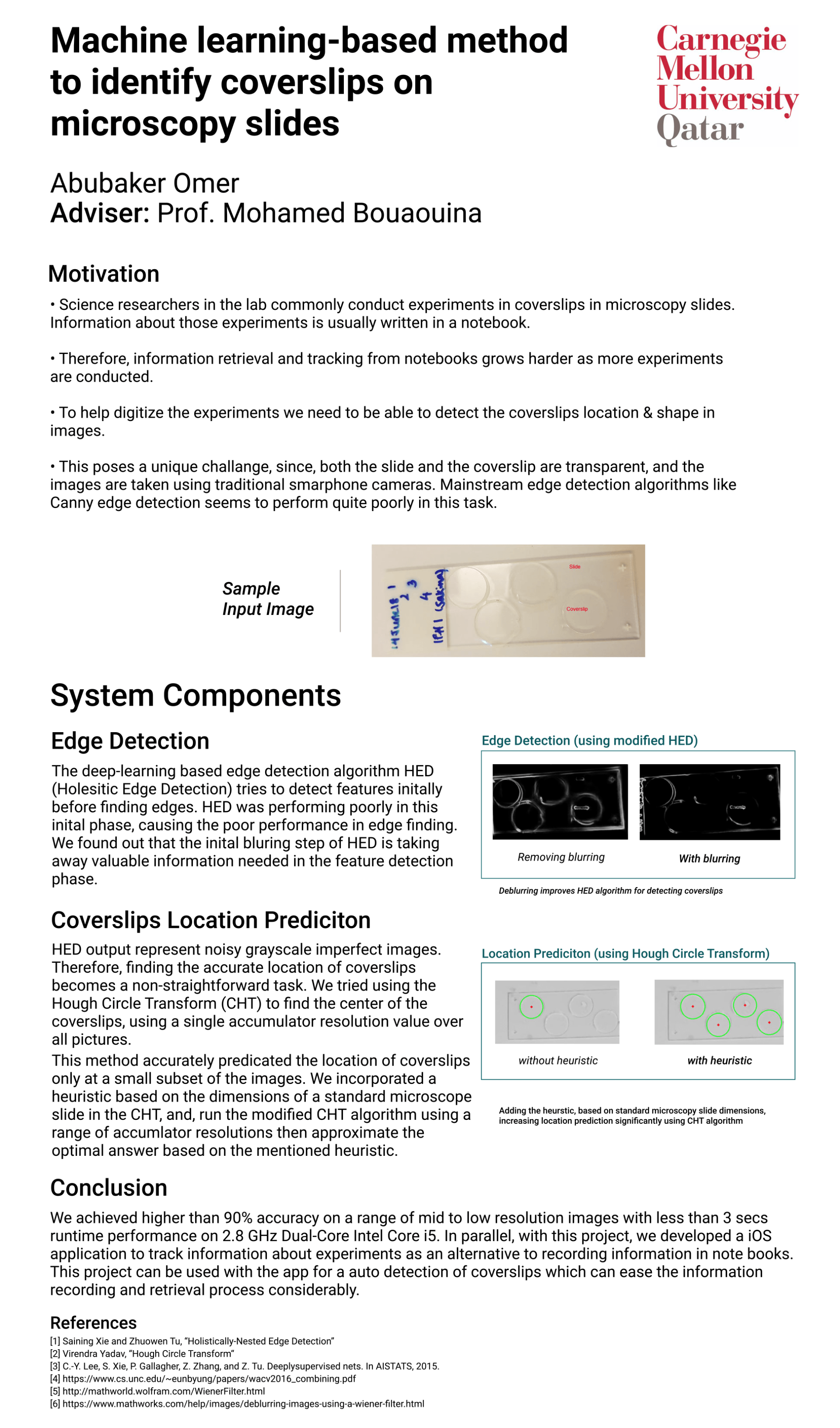Biological scientists commonly conduct a large number of experiments using glass microscopy slides. The stained specimen (or cells) is placed between a round piece of glass called a coverslip and the slide. On a standard microscopy slide (75×25 mm) there can be up to 6 coverslips, with 6 different specimen each having a plethora of details regarding its origin and staining conditions. Therefore, tracking and retrieving information using conventional note taking methods becomes a fairly lengthy and arduous process. Labs would invest in costly imaging platforms to scan the whole slide and palliate to this challenge. Here, we investigate a deep learning-based alternative method which could be used on a cell phone equipped with a camera. To help digitize the experiments data we need to be able to detect and locate microscopy slides’ coverslips in images. Both coverslips and microscopy slides are transparent, therefore, detecting features on images, including them, becomes a non-trivial process, which mainstream edge detection algorithms like the Canny edge detection algorithm perform poorly on. In this paper, we propose a system to detect and locate coverslips with high accuracy using a modified version of the deep-learning based edge detection algorithm Holistic Edge Detection (HED) algorithm, and the Hough Circle Transform.



